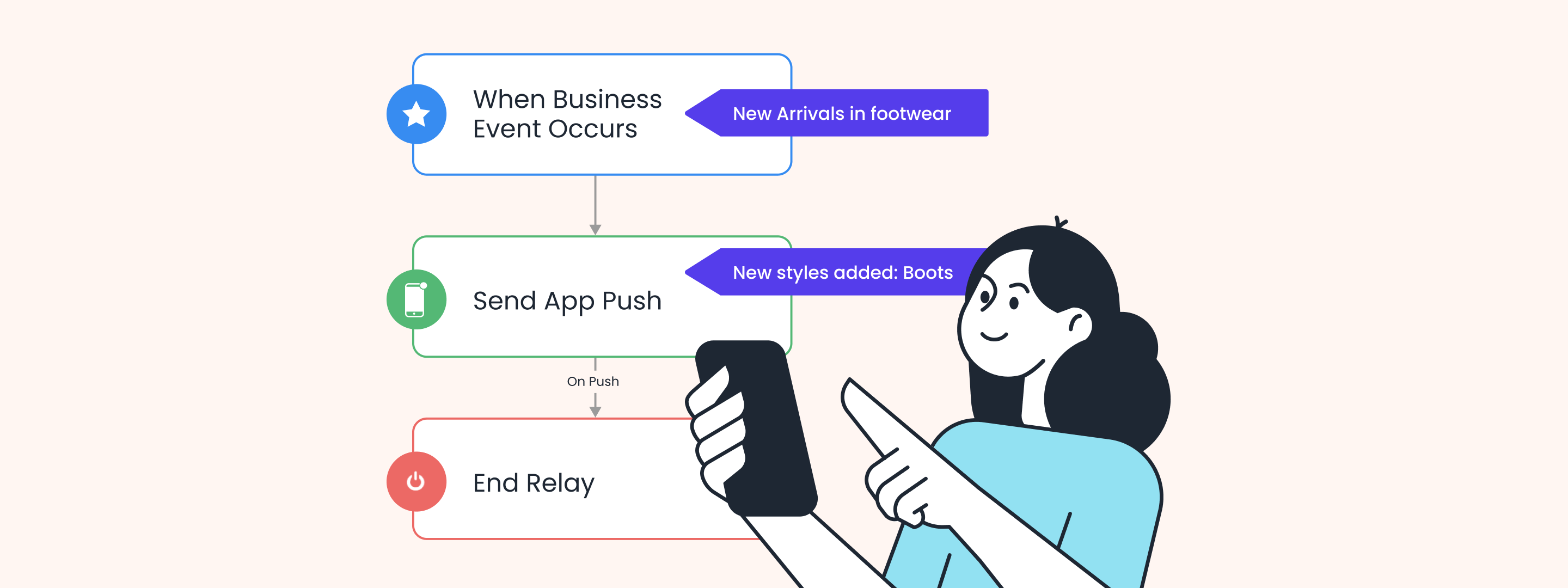Personalization is no longer a luxury—it’s an expectation. 71% of consumers now expect personalized experiences when interacting with brands. Yet, many companies still rely on outdated, one-size-fits-all marketing approaches, sending generic offers to the masses. The result? Missed opportunities and disengaged customers.
But here’s the exciting part: companies that excel at personalization see a 40% boost in revenue! So, how can you jump on this personalization bandwagon and start reaping the rewards? Enter — Catalogs and Recommendations, the perfect tools to help you deliver hyper-personalized experiences at scale.
In this blog, we’ll dive into how WebEngage’s Catalogs and Recommendations can help you connect with customers more meaningfully. Let’s dive in!
Introducing Catalogs
Ever opened a notification and thought, “Wow, this is exactly what I was looking for!” It feels personal, doesn’t it? Like it’s made just for you. But how do brands pull this off at scale?
The answer: Catalogs.
Catalogs are dynamic, real-time repositories of product data that power personalized experiences. They help you deliver timely, accurate, and relevant messages to your customers across various touchpoints.
Key Features of Catalogs
- Real-Time Accuracy: Keep your product data up-to-date—no manual fixes required.
- Event-Based Personalization: Personalize offers based on user actions, such as “Added to Cart” or “Viewed Product.”
- Automation at Scale: Sync and manage campaigns effortlessly across multiple channels.
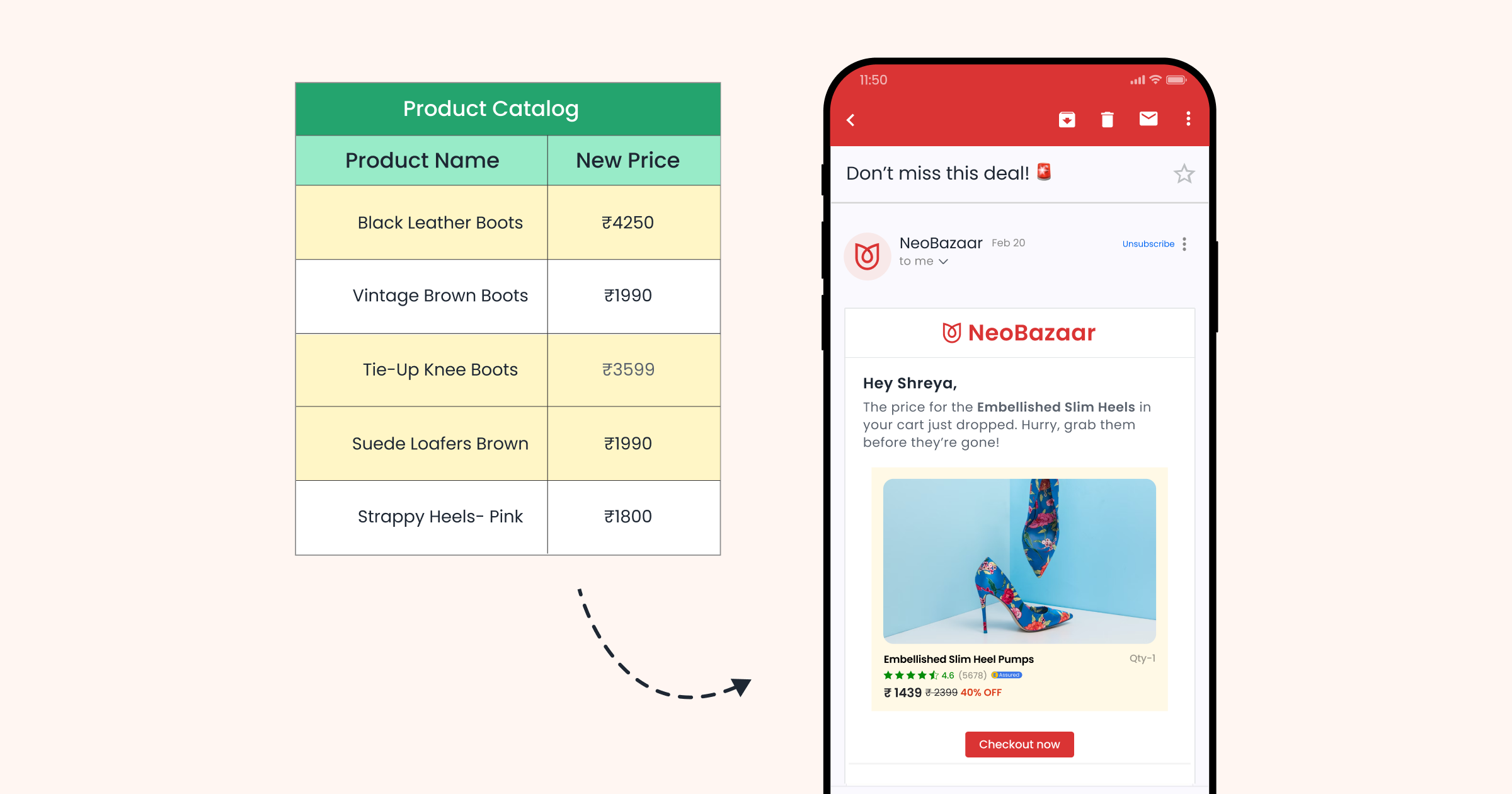
Use Cases for Catalogs
- Highlight Key Attributes: Showcase items with high ratings or unique features like eco-friendliness or limited editions.
- Dynamic Information at Checkout: Display real-time data about products, such as ratings or reviews, directly at checkout to nudge users towards completing a purchase.
- Stock and Price Alerts: Notify users when items they’re interested in are back in stock, running low, or have price drops to create urgency and drive conversions.
- Personalized Recommendations: Use catalog data to recommend products or services tailored to user preferences, ensuring the messaging remains relevant and timely.
- Real-Time Catalog Updates for Services: Offer real-time updates on product availability or service slots, encouraging users to take immediate action.
- Trending and Popular Items: Display top-rated or frequently purchased items to drive interest in best-sellers.

Introducing Recommendations
A common problem brands face is relying on a one-size-fits-all approach, resulting in missed opportunities and disengaged customers. In fact, 91% of customers are less likely to shop with brands that fail to deliver relevant recommendations.
Here’s the good news: with our machine learning-driven recommendation engine, you can deliver personalized, timely, and relevant suggestions. Our system dynamically leverages your product catalog and user behaviors or interests to craft compelling recommendations.
Plus, you have complete flexibility to manage the recommendation logic and types that best suit your campaigns.

Understanding Recommendation Types and Use Cases
- Relevant Recommendations: Specific suggestions tied to particular items, enhancing the user experience with contextually appropriate offers.
Use Case: Offer complementary products during checkout to increase order value (e.g., recommend a wireless charger when a user adds a smartphone to their cart).
- Personalized Recommendations: Suggestions tailored to individual user behavior, preferences, or purchase history, delivering highly relevant content.
Use Case: Display tailored recommendations on homepages or category pages (eg. suggest crime dramas to a user frequently watching shows in that genre).
- Static Recommendations: Fixed suggestions for all users, ideal for campaigns targeting new users or when personalized data is insufficient.
Use Case: Showcase best sellers to new visitors on the website (e.g., top-selling sneakers).
- Custom Recommendations via API: Tailor recommendations to specific user segments, cohorts, or behaviors with API-driven precision. Read our blog on Custom Recommendations via API to learn more.
Use Case: Recommend high-value items to premium users or frequent buyers (e.g., premium savings accounts or credit cards).
- Fallback Recommendations: Ensures users always see relevant suggestions, even when the Primary Recommendation strategy doesn’t have enough items. Read our blog on Fallback Recommendations to learn more.
Use Case: When the primary recommendation (eg. personalized) falls short, display fallback 1 (personalized) and fallback 2 (static) instead.

Now that we’ve seen how Catalogs and Recommendations work, let’s understand how they work together. When combined, they unlock the power of real-time, context-aware personalization at scale. Here’s how:
How Catalogs and Recommendations Work Together
Basic Use Cases
- Personalized Product Display
Use catalogs to power personalized recommendations on key landing pages. When a user visits, they see a curated list of products tailored to their recent browsing or purchase history, increasing engagement and driving conversions.
Example: A first-time visitor sees trending products, while a returning customer sees items they previously viewed.

- Post-Purchase Cross-Sell Emails
After purchase, send personalized follow-up emails with relevant cross-sell product recommendations using catalog.
Example: If a customer buys a skincare product, recommend trendy new arrivals in skincare like face masks, sheet masks, etc.
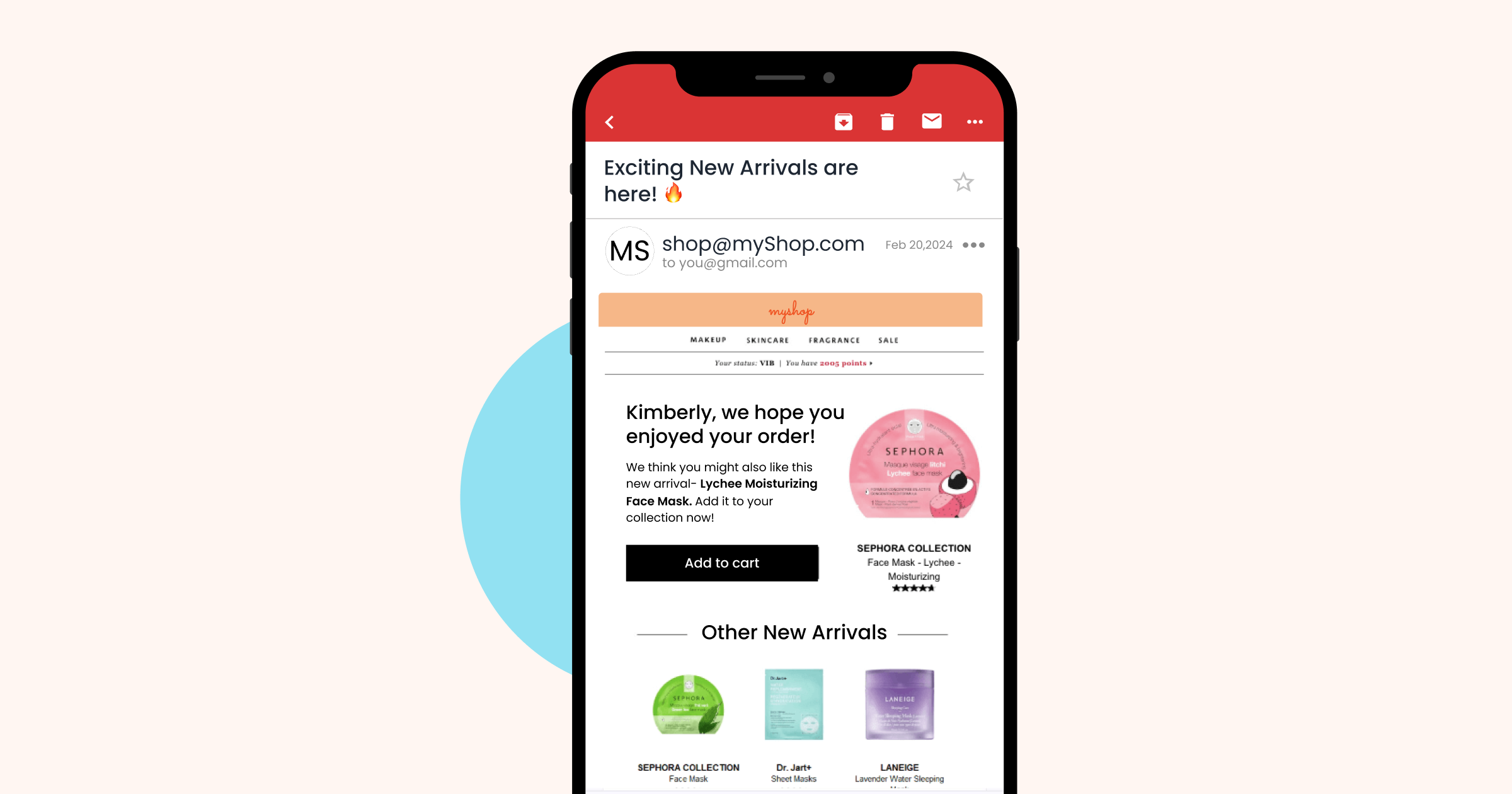
Intermediate Use Cases
- Dynamic Campaigns with Real-Time Stock Updates
Launch campaigns that showcase products based on real-time inventory from the catalog. If stock levels change, the recommendations auto-update to reflect only available items.
Example: During a sale, only in-stock items are recommended to avoid user frustration from seeing unavailable products.

- Personalized Promotions Based on User Behavior
Trigger personalized offers in-app or via email, using catalog data combined with user actions like cart abandonment or wishlist additions.
Example: If a user adds a product to their wishlist but doesn’t purchase it, send them a personalized promotion or discount on that specific product.

Advanced Use Cases
- Behavior-Driven Dynamic Bundles
Create dynamic product bundles tailored to user behavior, powered by both catalog and the recommendation engine. These bundles can change in real-time based on browsing history or past purchases.
Example: A user who frequently browses electronics gets a dynamic bundle with a laptop, mouse, and keyboard.
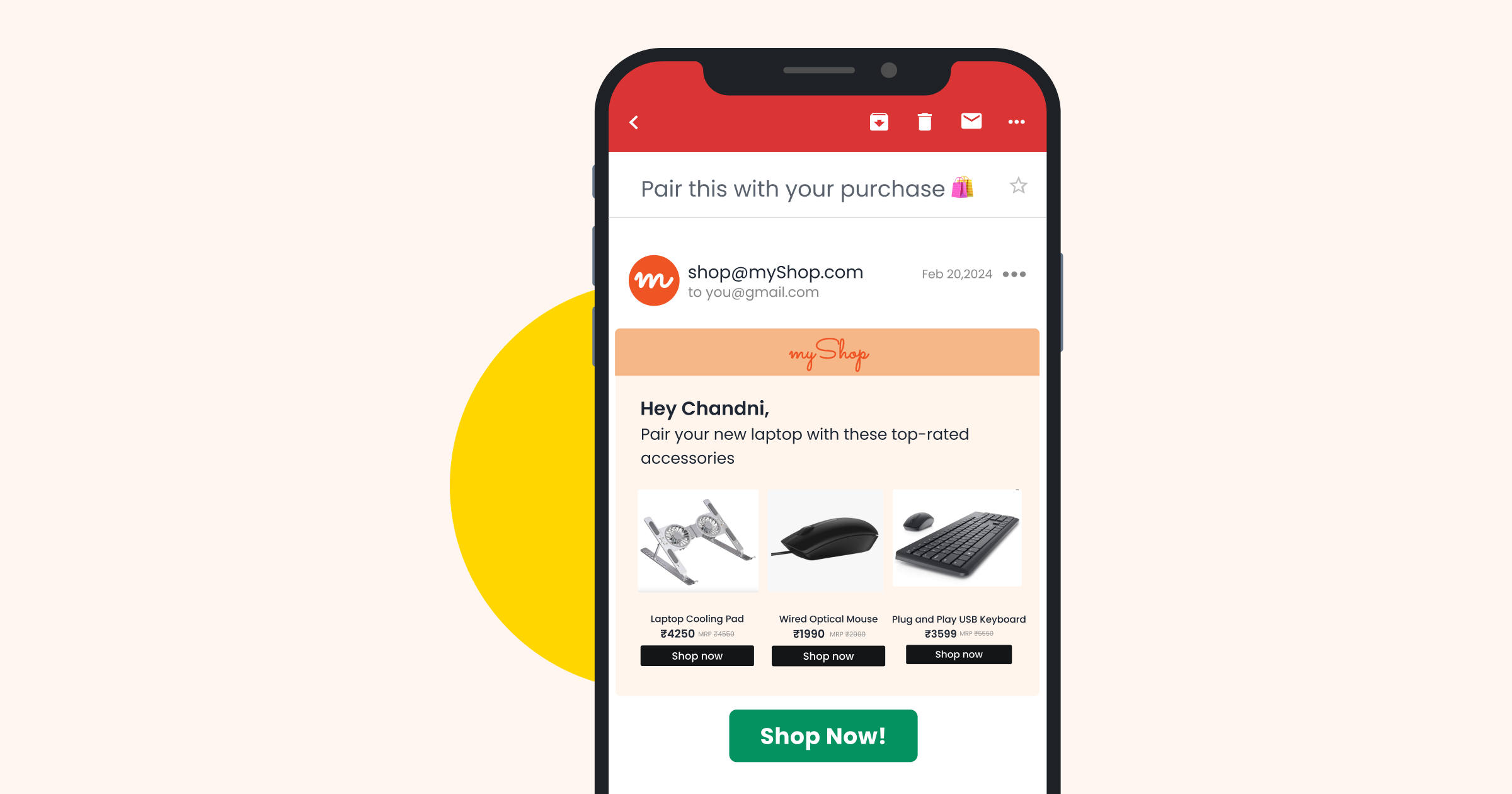
- Predictive Personalization with Machine Learning
Leverage predictive algorithms to suggest future purchases based on historical data. The catalog ensures up-to-date product availability, while the recommendation engine predicts what users might want next.
Example: A frequent traveler receives personalized hotel and flight recommendations based on past bookings and current location trends.

Wrapping Up
With Catalogs, you get real-time, accurate product data at your fingertips—no manual work, no outdated listings. Recommendations bring personalization to life, helping you deliver relevant suggestions that users care about. Together, they create a seamless engine that powers smarter, context-aware engagement across channels.
Ready to transform how you engage with users? Try out these tools, watch this space for updates, and if you have any questions, reach out to product@webengage.com!





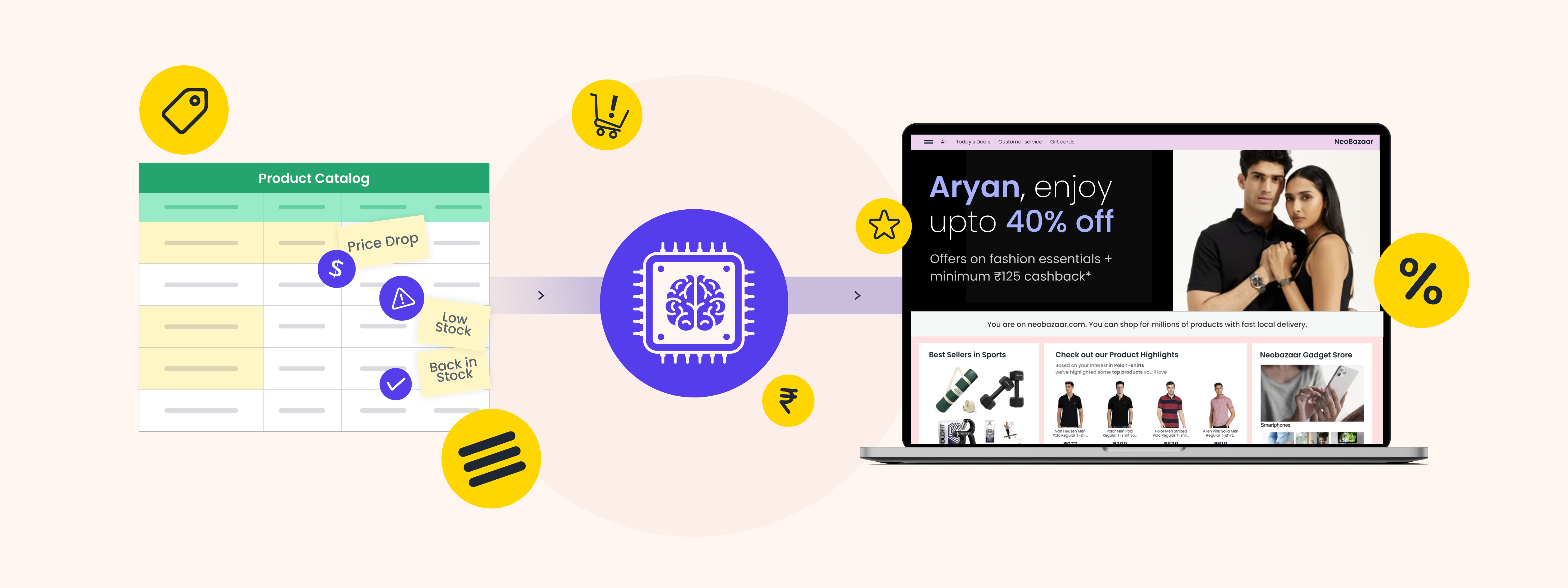

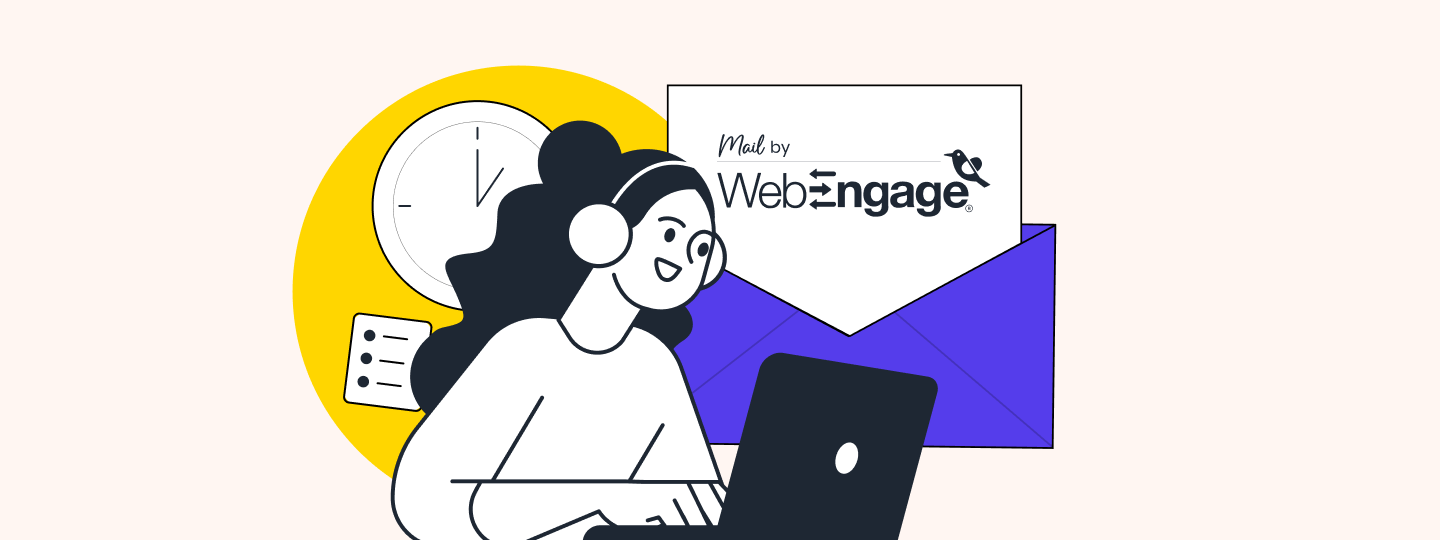
 Sanjay Mishra
Sanjay Mishra